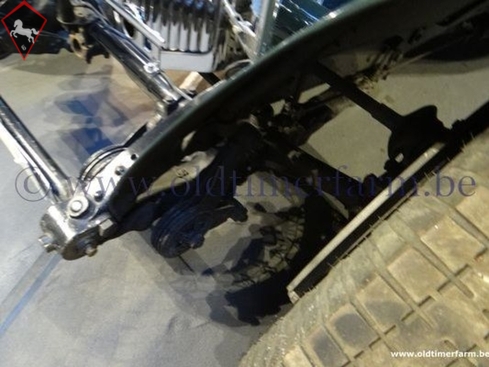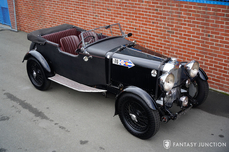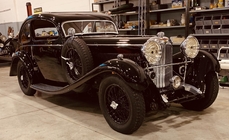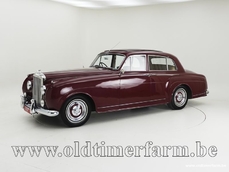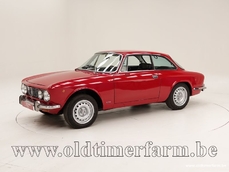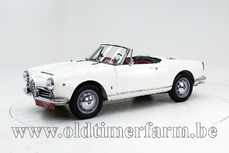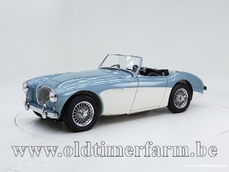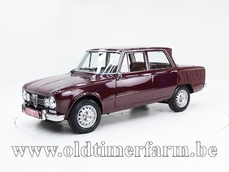Lagonda M45 '34 1934
General description :
British racing Green Black leather interior LG 45 engine (4bolt mains) with M45 cylinder head improved cam and compression ratio. steel conrods with shell bearings , Fully balanced. recent New cylinder block Twin magnetos Alvis speed 25 all synchro gearbox lightened flywheel modern clutch. Fluid crank damper rear axle 3.273.1 comp ratio approx 7.4.1 High volume oil pump comp. head gasket. The Lagonda history (from Wikipedia, the free encyclopedia) Lagonda is a British luxury car marque established in 1906, which has been owned by Aston Martin since 1947. Lagonda was founded as a company in 1906 in Staines, Middlesex, by an American, Wilbur Gunn (1859–1920), a former opera singer of Scottish ancestry. He named the company after Lagonda Creek near Springfield, Ohio, the town of his birth. He had originally built motorcycles on a small scale in the garden of his house in Staines with reasonable success including a win on the 1905 London—Edinburgh trial. In 1907 he launched his first car, the 20 hp, 6-cylinder Torpedo, which he used to win the Moscow–St. Petersburg trial of 1910. This success produced a healthy order for exports to Russia which continued until 1914. In the pre-war period Lagonda also made an advanced small car, the 11.1 with a four-cylinder 1000 cc engine, which featured an anti-roll bar and a rivetted monocoque body and the first ever fly-off handbrake. The ratchet control button on the end of a fly-off handbrake is designed to work in the opposite way to what is normally accepted. If the lever is lifted or pulled back to the "on" position, on letting go it immediately releases unless the end button is pressed and held in place before letting go of the lever. Once set, the brake is released by lifting the handbrake lever (not pushing the button) in the setting direction (up or back). This mechanism was traditionally fitted to sports cars to facilitate a racing get-away, such as at traffic lights. It can also be used to help the back wheels to slide, without the worry of the ratchet leaving the brake on. Between the wars After the end of the war the 11.1 continued with a larger 1400-cc engine and standard electric lighting as the 11.9 until 1923 and the updated 12 until 1926. Following Wilbur Gunn's death in 1920, three existing directors headed by Colin Parbury took charge. The first of the company's sports models was launched in 1925 as the 14/60 with a twin-cam 1954-cc 4-cylinder engine and hemispherical combustion chambers. The car was designed by Arthur Davidson who had come from Lea-Francis. A higher output engine came in 1927 with the 2-litre Speed Model which could be had supercharged in 1930. A lengthened chassis version, the 16/65, with 6-cylinder 2.4-litre engine, was available from 1926 to 1930. The final car of the 1920s was the 3-litre using a 2931-cc 6-cylinder engine. This continued until 1933 when the engine grew to 3181 cc and was also available with a complex 8-speed Maybach transmission as the Selector Special. A new model for 1933 was the 16-80 using a 2-litre Crossley engine with pre-selector gearbox from 1934. A new small car, the Rapier came along in 1934 with 1104-cc engine and pre-selector gearbox. This lasted until 1935 but more were made until 1938 by a separate company, David Napier and Son of Hammersmith, London. At the other extreme was the near 100 mph, 4.5-litre M45 with Meadows-supplied 6-cylinder 4467-cc engine. An out and out sporting version the M45R Rapide, with tuned M45 engine and a shorter chassis achieved a controversial Le Mans victory in 1935. Also in 1935 the 3-litre grew to a 3.5-litre. All was not well financially and the receiver was called in 1935, but the company was bought by Alan P. Good, who just outbid Rolls-Royce. He also persuaded W. O. Bentley to leave Rolls-Royce and join Lagonda as designer along with many of his racing department staff. The 4.5-litre range now became the LG45 with lower but heavier bodies and also available in LG45R Rapide form. The LG45 came in 3 versions known as Sanction 1, 2 and 3 each with more Bentley touches to the engine. In 1938 the LG6 with independent front suspension by torsion bar and hydraulic brakes came in. Bentley's masterpiece the V12 was launched in 1937. The 4480-cc engine delivered 180 bhp and was said to be capable of going from 7 to 105 mph in top gear and to rev to 5000 rpm. The car was exhibited at the 1939 New York Motor Show: "The highest price car in the show this year is tagged $8,900. It is a Lagonda, known as the "Rapide" model, imported from England. The power plant is a twelve-cylinder V engine developing 200 horsepower." In 1947 the company was taken over by David Brown and moved in with Aston Martin, which he had also bought, in Feltham, Middlesex. The old Staines works at Egham Hythe passed to Petters Limited, in which A.P. Good had acquired the controlling interest. Production restarted with the last model from W. O. Bentley, the 1948 2.6-Litre with new chassis featuring fully independent suspension. Its new 2580 cc twin overhead cam straight 6 became the basis for the Aston Martin engines of the 1950s. The engine grew to 3 litres in 1953 and continued to be available until 1958. Many thought that the marque had disappeared but in 1961 the Rapide name was resurrected with aluminium body by Carrozzeria Touring of Milan and 3995 cc engine capable of taking the car to 125 mph. By this time, Aston Martin-Lagonda as it now was, had moved to Newport Pagnell in Buckinghamshire. The Rapide lasted until 1965. Between 1974 and 1976, seven Lagonda saloons were produced on the basis of the Aston Martin V8. One more car was to appear with the large and futuristic Aston Martin Lagonda of 1976 designed by William Towns. This low, rather square, wedge shaped car was built on Aston Martin V8 components and was available, at least in theory, until 1989. Aston Martin produced a concept car called the Lagonda Vignale at the 1993 Geneva motor show. During 1993-1994, a handful of Lagonda 4-door saloons and shooting brakes were built on the basis of the Aston Martin Virage. They could be ordered with the 5.3 liter V8 (310 HP) or the 6.3 liter V8 (500 HP). Production numbers Lagonda Saloon (8 or 9 cars), Lagonda Shooting Brake 5-doors (1 or 2 cars). Aston Martin said on 1 September 2008, as reported by Automotive News Europe that it will relaunch its Lagonda brand to help it expand into new markets such as luxury sedans and celebrate Lagonda's centennial anniversary in 2009. "The Lagonda brand would allow us to develop cars which can have a different character than a sports car," said CEO Ulrich Bez in a statement. "Lagonda will have its own niche with luxurious and truly versatile products suitable for both existing and emerging markets". "Lagonda models would be vehicles that could be used all year round in markets such as Russia where specialized sports cars such as Aston Martins could only be used for three or four months each year", said Aston Martin spokeswoman Janette Green. The Rapide name was revived in 2010 as the Aston Martin Rapide saloon. Aston Martin confirmed the revival of the Lagonda brand on March 9, 2011. The new range will initially consist primarily of high-end SUVs. Specifications BodyworkLength : cm (in): 455 (179) Width : cm (in): 173 (68) Height : cm (in): Wheelbase : cm (in) : 312 Weight: kg (lb) : 1676 (3695) Mechanics. Displacement : straight-6 4453 cc (272 ci) Valve gear : 12 Fuel system : 2 SU carburettors Gearbox : 4 speed, manual Drive wheels : rear-wheel drive Maximum power : 142 bhp at 3100 rpm Maximum torque : Maximum speed : 163 km/h (101 mph)For more pictures sroll down.This car is just in at Oldtimerfarm, Aalter Belgium. Steenweg op Deinze 51C. Teusday-Saterday 10-17h (no appointment needed) Sunday: closed. Monday strictly on appointment. We specialize in consignment sales of collection cars. We are proud we can offer this car for sale. A more detailed description will soon follow. In the meantime you can have a look at the very ample photo coverage on the website. Of course Xavier or Olivier will be very happy to give you all possible explanations by phone on +32472401338.Meet us at:You can meet us at these events where we will show a sample of our stock.13-14/02/2016 Flanders Collection Car Gent04-06/03/2016 Antwerp Classic Salon06-10/04/2016 28th Techno-Classica Essen - Germany29-01/05/2016 Open Door Event @OLDTIMERFARM
http://www.oldtimerfarm.be/en/collection-cars-for-sale/1559/lagonda-m45-34.php
1934 Lagonda M45 '34 is listed sold on ClassicDigest in Aalter by Oldtimerfarm Dealer for €200000.
Car Facts
Car type : Car Make : Lagonda Model : M45 Model Version : '34 Engine size : 0.0 Model Year : 1934 Location : Aalter Vehicle Registration : Normal
Sold
Seller Information
Sold
People who viewed this Lagonda M45 also viewed similar Lagonda listed at ClassicDigest
Other cars listed for sale by this dealer
About Lagonda
Ah, the story of Lagonda, a true gem in the tapestry of British automotive history! Grab a cuppa, and let me take you on a journey through the annals of this illustrious marque.Chapter 1: The Early Years (1906-1947)
Picture this: It's 1906, and a chap by the name of Wilbur Gunn decides to put his name on the map. He establishes Lagonda Limited, and from the get-go, he's got a penchant for the fancy. Lagonda starts off with motorcycles, and Gunn even races them himself. But hold on, it gets better. By the '20s, Lagonda sets its sights on four-wheeled wonders.
Cue the roaring '20s and the birth of some exquisite machines. The Lagonda 11.1, 14/60, and the M45 Rapide become the darlings of the British motoring scene. Sleek, stylish, and a joy to drive, these Lagondas are the epitome of pre-war elegance. And just when you thought it couldn't get any better, along comes the mighty LG45.
Chapter 2: The Post-war Resurgence (1947-1974)
The war's over, and Lagonda dusts off its overalls to get back in the game. David Brown, the man behind Aston Martin, steps in, and suddenly, Lagonda is under the wing of a fellow British automotive enthusiast. The '50s see a revival with the DB2 and DB3, and the Lagonda Rapide makes its grand entrance.
But hold onto your flat caps, my friend, because the '60s usher in the mighty Lagonda Rapide sedan, a true symbol of luxury and power. Meanwhile, the stunning Aston Martin DB5 steals the spotlight in the spy world, but Lagonda keeps its cool.
Chapter 3: The Wedge Era (1976-1990)
Fast forward to the '70s, and Lagonda throws a curveball with the Lagonda Series 2. What's that you say? A wedge-shaped wonder with digital dashboards and space-age styling? Absolutely. It's the era of excess, and Lagonda embraces it with open arms. The Series 3 follows suit, and suddenly, Lagonda is the epitome of '80s opulence.
Chapter 4: The Modern Revival (1990s-Present)
The '90s and beyond see Lagonda in a bit of a slumber. But worry not, my fellow enthusiast, because the brand gets a wake-up call in the 21st century. Aston Martin, ever the steward of British motoring glory, revives Lagonda with the Taraf and the Vision Concept.
And there you have it, the tale of Lagonda, a marque that has weathered the winds of time with style, sophistication, and a dash of British eccentricity. So, tip your hat to Lagonda, a name that will forever echo through the halls of automotive elegance. Cheerio!
